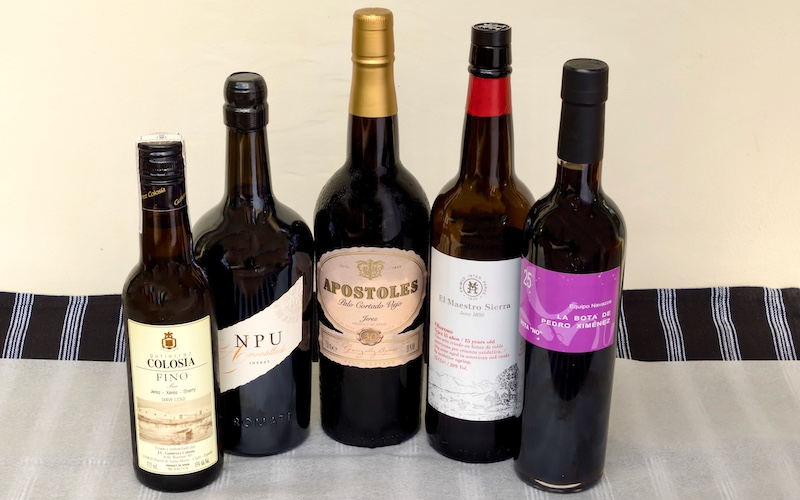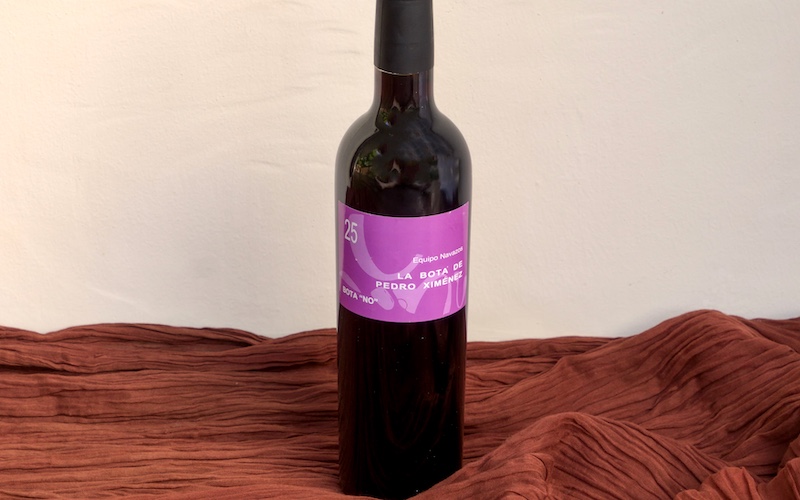The wines made around the town of Jerez de la Frontera in Andalusia, southern Spain, are known as Jerez in Spanish, a name that’s been Anglicised to Sherry in English. And the best Sherries are some of the world’s most delicious wines.


Sherry is one of my great liquid passions. If you’re not yet a Sherry drinker, forget whatever you think about sweet cream “sherries” sipped by elderly aunts and open your mind to one of the most exciting and diverse wine categories around. Sherry comes in a range of styles, though most are made from the same white grape, palomino. Here’s a very brief overview of Sherry and the five main Sherry categories. Plus an introduction to some of the best Sherry bodegas, a great place to start for top Sherry wines. If you’re keen to know more about Sherry, listen to my interview with Phillip Clark on ABC Radio and scroll down to the FAQ below.

Gutiérrez Colosía Fino del Puerto
The driest Sherry is aged under a covering of yeast called flor. This prevents it from oxidising, keeping it pale and delicate. It’s a great aperitif, especially wonderful with oysters. Most Fino is produced in the town of Jerez, but Gutiérrez Colosía, in the town of El Puerto de Santa Maria, produces the only commercially bottled Fino del Puerto. Manzanilla is Fino aged in the seaside town of Sanlúcar de Barrameda and is lighter still.

Sanchez Romate Amontillado NPU
Amontillado starts as Fino, under flor (biological ageing). Then it’s further aged without flor, allowing it to oxidise and gain an amber colour and deeper, nuttier flavour, though still quite dry. It typically smells of almonds or hazelnuts and is ideal with hard cheeses. One of my favourite bodegas, Sanchez Romate, founded in 1781, produces the wonderful Amontillado NPU.

Gonzalez Byass Apostoles Palo Cortado VORS
The rarest Sherry style occurs naturally when flor dies on Fino and the wine oxidises and develops some Oloroso-like characters. Tasting somewhere between Amontillado and Oloroso, it’s especially good with charcuterie. Gonzalez Byass, best known for Tio Pepe Fino, also has the delicious Apostoles Palo Cortado in their VORS (very old rare Sherry) range, with an average age of 30+ years.

El Maestro Sierra Oloroso
The palomino juice for rich, dark amber Oloroso is fuller-flavoured than that used for Fino and is aged oxidatively (without flor) from the outset. Oloroso is dry and nutty, like Amontillado, but with a richer texture and higher alcohol. The nuttiness is usually more like walnuts than almonds and delicious with game. El Maestro Sierra, an artisanal bodega on the outskirts of Jerez, makes a gorgeous 15 year old Oloroso.

Equipo Navazos Pedro Ximenez (PX)
Made from pedro ximenez grapes, PX is an intensely-flavoured, dark, almost syrupy, naturally sweet Sherry with rich, dried fruit flavours. It’s an excellent match with chocolate desserts. Equipo Navazos, founded in 2005 by a group of Sherry-lovers, isn’t a bodega but a company that seeks out and bottles small quantities of exceptional Sherry as limited releases, their PX is glorious. Try it with chocolate soufflé (see video below).
Updated 06 Dec 2024
Sherry is made in a region around the town of Jerez de la Frontera in Andalusia, southern Spain. Called ‘the Sherry Triangle’, it is the area between the towns of Jerez de la Frontera (inland), Sanlúcar de Barrameda (on the coast, where Manzanilla is aged), and El Puerto de Santa María (in the south).
Sherry is an Anglicisation of the Spanish word Jerez, referring to the town of Jerez de la Frontera.
Sherry is made in five main styles: Fino (including Manzanilla), Amontillado, Palo Cortado, Oloroso and PX (Pedro Ximenez).
Sherry wine is made by a process called ‘fractional blending’ where wines of different ages are blended through a series of barrels called a solera system.
A solera is a series of barrels where only wine from the oldest barrel is bottled, then each barrel is topped up with wine from the next oldest barrel until new wine is added to the youngest barrel.
Flor (from the Spanish word for flower) refers to a layer of mould that grows on top of some wines.
Sherry can be aged biologically, under flor, or oxidatively, without flor. Biological ageing is used to make pale Sherry such as Fino and Manzanilla, while oxidative ageing creates dark Sherries like Amontillado, Oloroso and Palo Cortado.
Most Sherries are dry wines. There are three sweet styles of Sherry: PX made from pedro ximenez grapes, the lighter Moscatel made from muscat grapes, and Cream Sherries made by blending dry Sherry (such as Oloroso) with a little PX or Moscatel.
Dry Sherries are made from the white grape, palomino. Sweet Sherries are made from pedro ximenez and muscat of Alexandria.
Manzanilla is Fino Sherry that’s been aged in the coastal town of Sanlúcar de Barrameda. It’s the lightest, most elegant style of Sherry.





